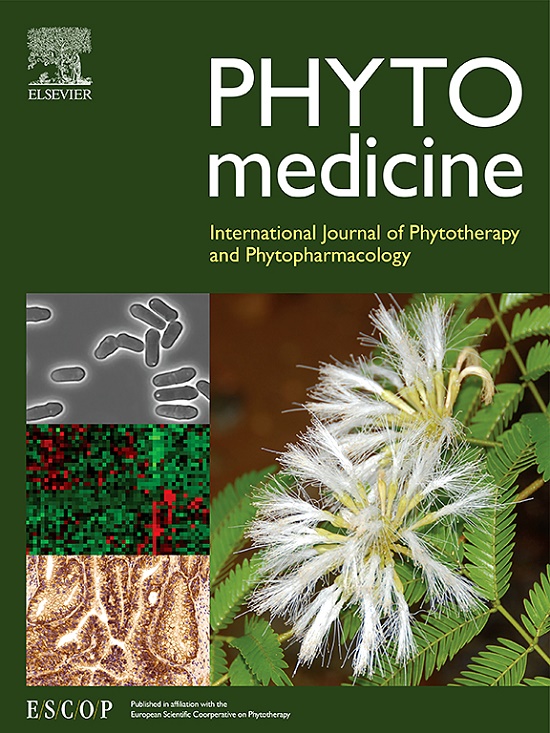Hepatotoxicity of Phytolacca acinosa Roxb mediated by phytolaccagenin via ferroptosis/PPAR/P53/arachidonic acid metabolism
IF 6.7
1区 医学
Q1 CHEMISTRY, MEDICINAL
引用次数: 0
Abstract
Background
The traditional Chinese medicine Phytolacca acinosa Roxb (PAR), known as Shanglu, possesses recognized therapeutic benefits against many diseases. PAR is also hepatotoxic, making it a major public health problem. However, the specific toxic substances and molecular mechanisms of PAR remain unclear. Therefore, appropriate animal models and methods are essential to confirm the toxic components and related mechanisms of PAR.
Methods
L-02 cells and zebrafish larvae at 4 days post-fertilization (4 dpf) were used as models and treated with various concentrations of phytolaccagenin (Phy), esculentoside A (EsA), and esculentoside H (EsH). The hepatotoxicity of three samples was assessed based on liver phenotype, pathological assessments, and biochemical index in zebrafish and proliferative activity, apoptosis level, and biochemical index in L02 cells. The transcriptomic technique was used to explore the related signaling pathways and potential mechanisms in vitro and in zebrafish , and the findings were validated by RT-PCR.
Results
The results of acute toxicity tests indicated that Phy exhibited substantially more severe hepatotoxicity than EsA, while EsH did not lead to any obvious toxic effects. Especially, under sublethal exposure (<LC10), both Phy and EsA induced similar liver damage in zebrafish and L-02 cells, increasing mortality, disrupting morphology, enhancing apoptosis, altering liver enzyme levels, and leading to significant structural changes in cells and zebrafish. Multiomics analysis of 605 genes in L-02 cells and 780 genes in zebrafish showed that exposure to Phy significantly altered gene expression in various biological processes. Further enrichment analysis demonstrated that Phy predominantly affects the P53\apoptosis\cell cycle arrest, ferroptosis, PPAR signaling, and arachidonic acid metabolism, leading to notable cellular damage.
Conclusion
This study identified Phy as a key hepatotoxic component of PAR. Furthermore, using transcriptomic techniques, we preliminarily investigated the hepatotoxic mechanisms of Phy in vitro and in vivo. The results of the present study showed that Phy affects several signaling pathways, including those involved in lipid metabolism, oxidative stress, and apoptosis, finally leading to hepatotoxicity. These findings provide invaluable insights into the safe use of PAR in clinical settings.
求助全文
约1分钟内获得全文
求助全文
来源期刊

Phytomedicine
医学-药学
CiteScore
10.30
自引率
5.10%
发文量
670
审稿时长
91 days
期刊介绍:
Phytomedicine is a therapy-oriented journal that publishes innovative studies on the efficacy, safety, quality, and mechanisms of action of specified plant extracts, phytopharmaceuticals, and their isolated constituents. This includes clinical, pharmacological, pharmacokinetic, and toxicological studies of herbal medicinal products, preparations, and purified compounds with defined and consistent quality, ensuring reproducible pharmacological activity. Founded in 1994, Phytomedicine aims to focus and stimulate research in this field and establish internationally accepted scientific standards for pharmacological studies, proof of clinical efficacy, and safety of phytomedicines.
 求助内容:
求助内容: 应助结果提醒方式:
应助结果提醒方式:


